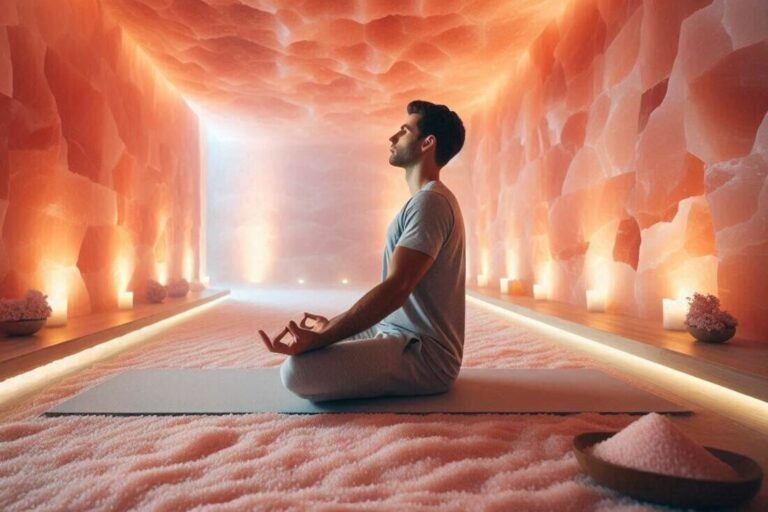Are you hitting a performance plateau despite putting in the extra miles and hours?
The secret to breaking through might be simpler than you think – your breathing.
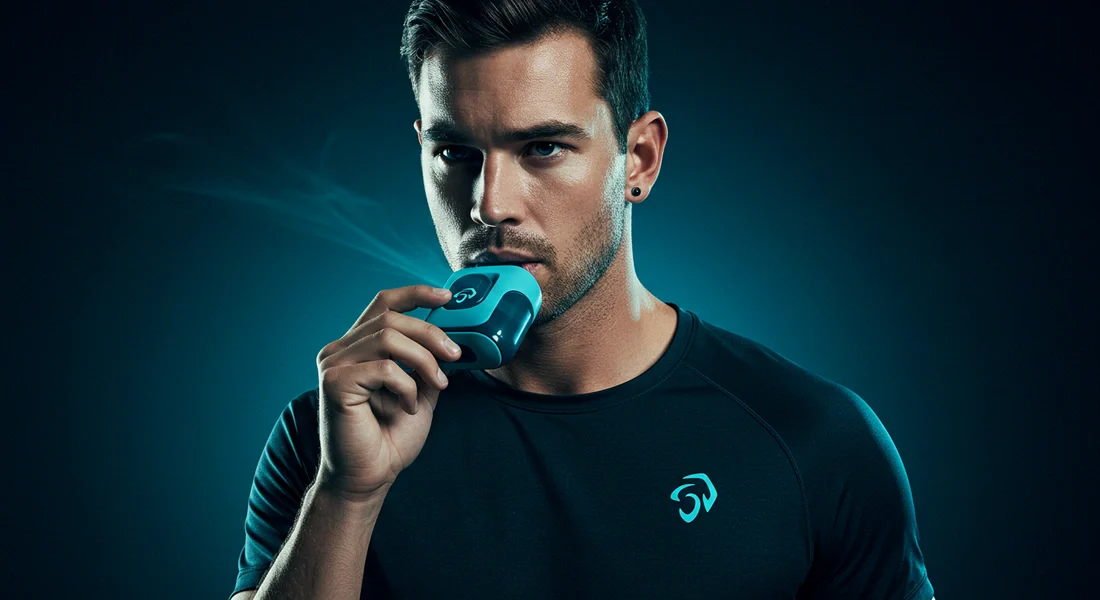
Elite athletes know that respiratory muscle training can be the difference between good and great performance.
In this guide, we’ll explore how specialized breathing exercisers can help you unlock your full athletic potential.
What Are Breathing Exercisers?
Breathing exercisers (also called respiratory muscle trainers or RMTs) are specialized devices designed to strengthen the muscles involved in respiration.
Unlike regular training that focuses on your limbs and core, these devices specifically target your diaphragm and intercostal muscles—the powerhouse behind effective breathing.
These compact devices work by creating resistance when you inhale or exhale, forcing your respiratory muscles to work harder.
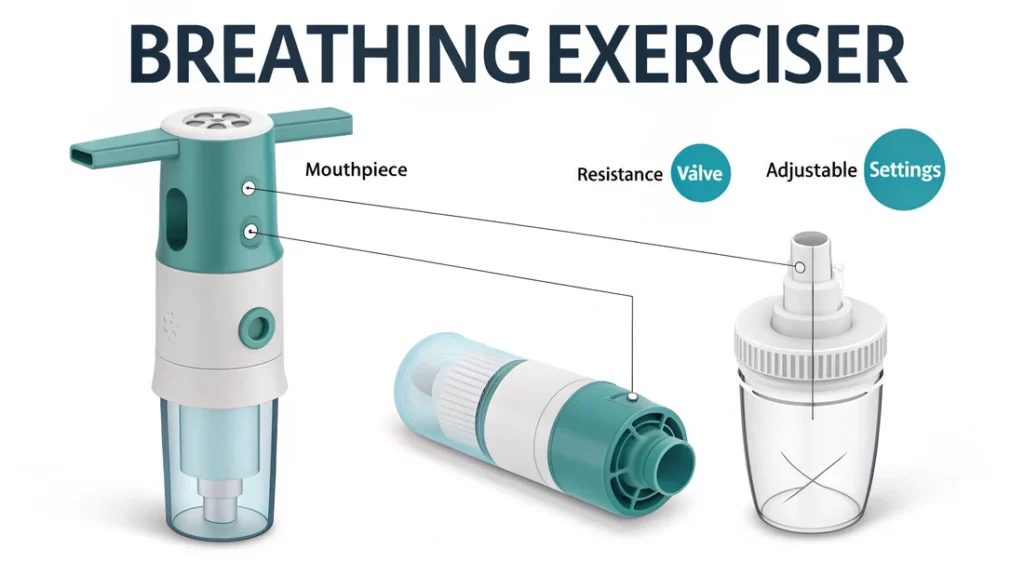
Think of it as weightlifting for your breathing muscles.
Just as you might use dumbbells to strengthen your biceps, breathing exercisers provide resistance training for the muscles that control your breath.
The Science-Backed Benefits for Athletes

Improved Oxygen Delivery
When your respiratory muscles become stronger, they work more efficiently during physical activity.
This efficiency translates to better oxygen delivery throughout your body, fueling your muscles when they need it most during high-intensity training or competition.
Increased Lung Capacity
Regular use of breathing exercisers can expand your lung capacity over time.
Athletes with greater lung capacity can take in more oxygen with each breath, reducing the respiratory rate needed during exercise—a crucial advantage during endurance events.
Enhanced Endurance Performance
Studies have shown that athletes who incorporate respiratory training into their regimen experience significant improvements in endurance.
By delaying respiratory muscle fatigue, you can maintain peak performance for longer periods—whether you’re running a marathon, cycling, or swimming laps.
Faster Recovery Between Sets
Strong respiratory muscles recover more quickly between high-intensity intervals.
This means you can push harder during training sessions and competitions with shorter rest periods, maximizing your workout efficiency.
Reduced Breathlessness
Many athletes experience the uncomfortable sensation of breathlessness during peak exertion.
Respiratory muscle training has been shown to reduce this feeling, allowing you to maintain focus on technique and performance rather than struggling for breath.
Top 5 Breathing Exercisers for Athletic Performance
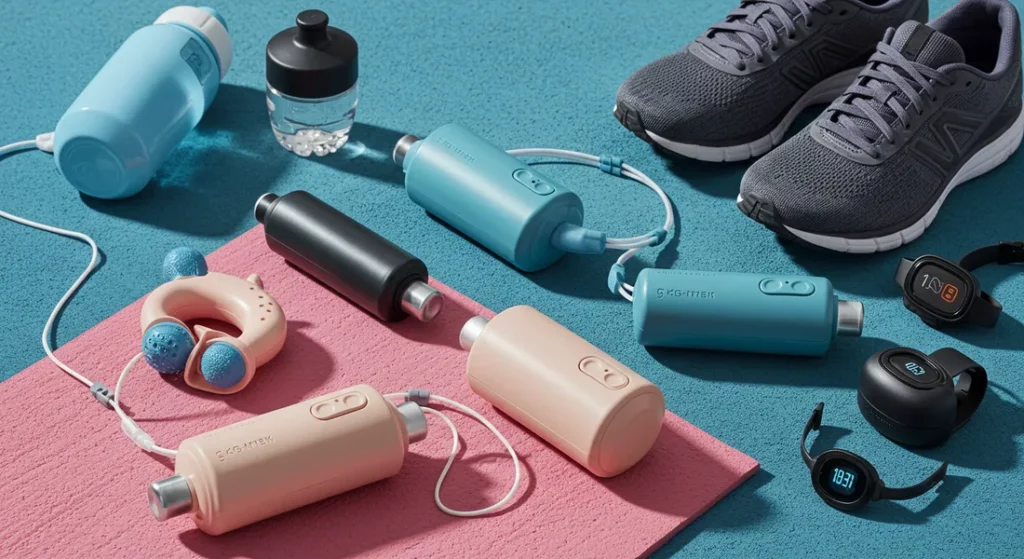
Based on performance features, athlete reviews, and training benefits, these five breathing exercisers stand out as the best options for serious athletes:
1. PowerBreathe Plus Resistance Breathing Trainer
Key Features:
- Pressure-threshold technology for consistent respiratory resistance
- Multiple resistance levels for progressive training
- Durable construction designed for athletic use
- Compact size perfect for gym bags and travel
- Research-backed results from a trusted brand in respiratory training
PowerBreathe offers science-backed respiratory training trusted by professional athletes worldwide.
This model provides effective resistance training without the complexity of digital features, making it an excellent entry point for serious athletes new to breathing training.
2. Oumua Pro
Key Features:
- Smart app integration with live training advice
- Dual functionality for both inspiratory and expiratory training
- Compact design ideal for travel
- Six resistance levels for incremental progress
The Oumua Pro stands out for its comprehensive approach to respiratory training, allowing athletes to strengthen both inhale and exhale muscles simultaneously.
Its smart app provides real-time coaching during sessions.
3. The Breather by PN Medical
Key Features:
- Independently adjustable inhalation and exhalation resistance
- Six distinct resistance settings for progressive training
- Clinically validated with over 30 years of research
- Includes guided training program
- Suitable for beginners through elite athletes
The Breather has earned its reputation through extensive clinical validation and accessibility for athletes at all levels.
Its simple design belies sophisticated respiratory training capabilities that have benefited Olympic athletes and weekend warriors alike.
4. Bas Rutten O2 Trainer
Key Features:
- Created by MMA champion and fitness expert Bas Rutten
- Simulates high-altitude training effects
- Adjustable air intake restrictor with multiple settings
- Flexible mouthpiece compatible with mouthguards
- Popular among combat sports athletes
The O2 Trainer takes a unique approach to respiratory training by focusing on controlled restriction during regular breathing patterns.
This approach has made it particularly popular among MMA fighters, boxers, and other combat sports athletes looking to enhance their breathing efficiency.
5. TrainingMask Performance Breathing Trainer
Key Features:
- Sleeve-based design with interchangeable resistance caps
- Simulates altitude training effects
- Multiple resistance levels for progressive training
- Secure fit during dynamic movements
- Popular among CrossFit athletes and HIIT enthusiasts
While different from traditional handheld breathing exercisers, the TrainingMask offers resistance training that many athletes incorporate into their warm-up routines.
Its secure fit makes it unique among breathing trainers for active use during certain training sessions.
How to Choose the Right Breathing Trainer for Your Needs
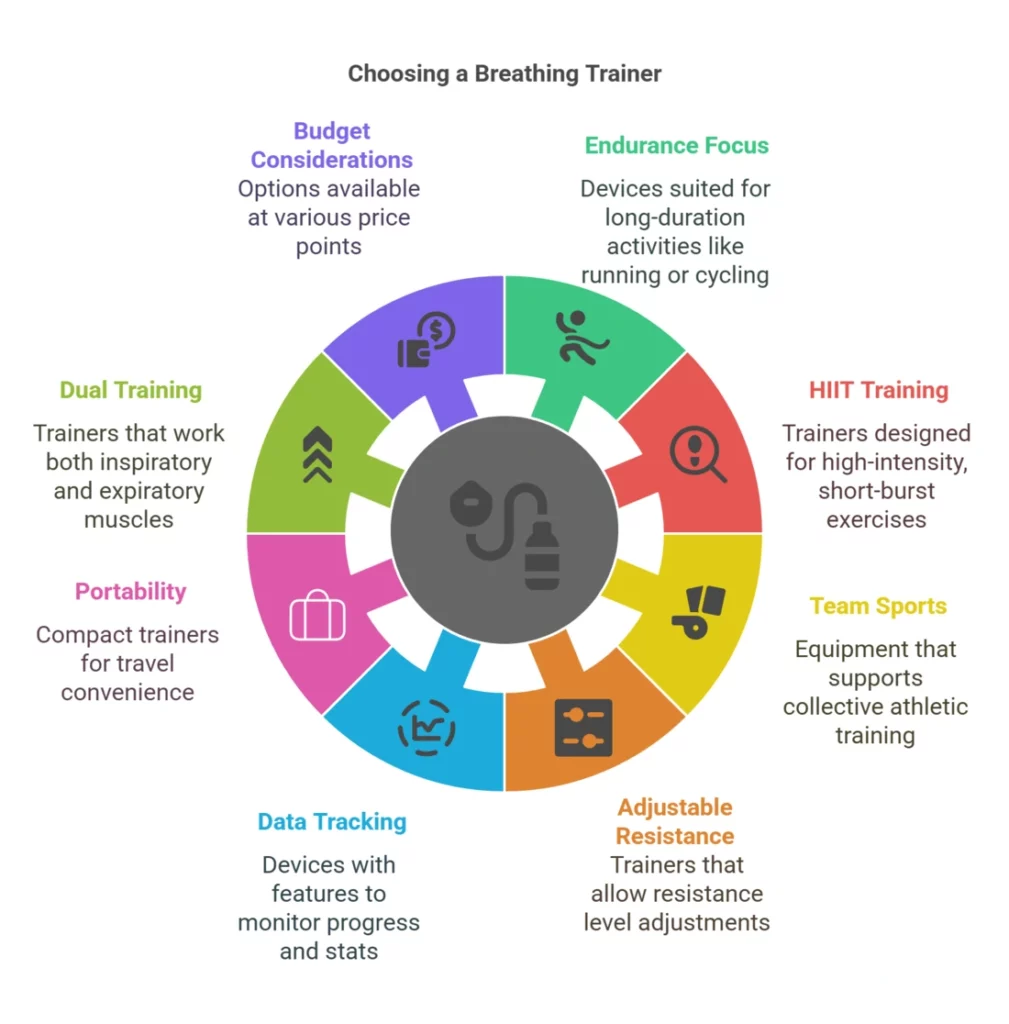
With several quality options available, selecting the right breathing exerciser depends on your specific athletic goals and preferences:
Consider Your Training Goals
Are you primarily focused on endurance events, high-intensity interval training, or team sports?
Different devices offer specialized features that may align better with certain athletic pursuits.
Key Features to Look For
- Adjustable Resistance: Ensures you can progress as your respiratory muscles strengthen
- Data Tracking: Helps monitor improvements and maintain motivation
- Portability: Important if you travel frequently for training or competition
- Dual Training: Consider whether you want to train both inspiratory and expiratory muscles
Budget Considerations
While premium options offer more features, even basic models provide effective training.
Consider your investment in respiratory training as part of your overall athletic development budget.
Integrating Breathing Training Into Your Routine

Daily Training Protocol
For optimal results, incorporate breathing exercises into your daily routine:
- Dedicate 5-10 minutes per day to respiratory training
- Perform in a seated position with good posture
- Schedule sessions separate from your main workouts
- Start with lower resistance and gradually increase as you progress
Common Mistakes to Avoid
- Using During Exercise: Breathing trainers are meant for isolated training, not during other physical activities
- Inconsistent Practice: Like any training, consistency is key for seeing results
- Improper Technique: Follow device-specific instructions carefully for maximum benefit
Frequently Asked Questions
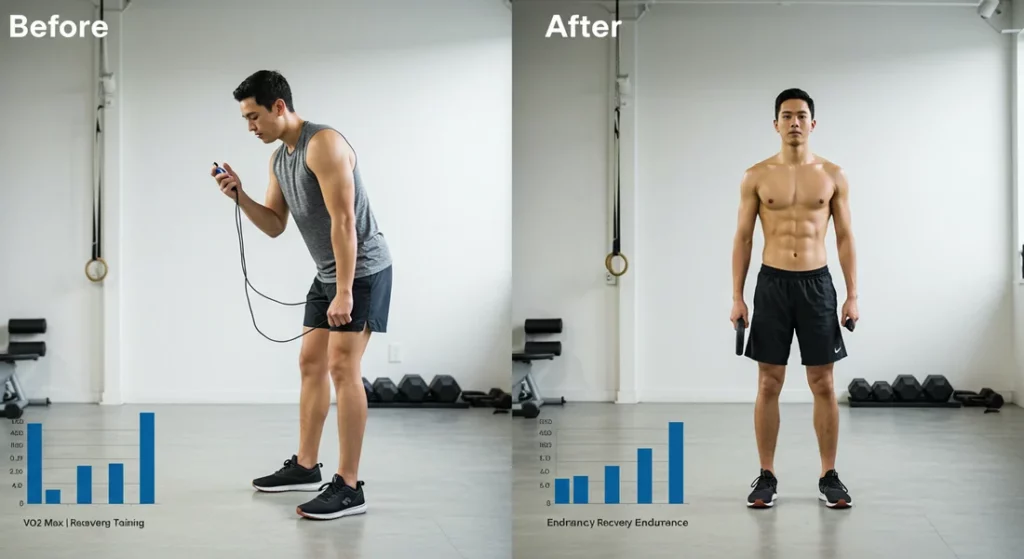
Do breathing trainers really work for athletes?
Multiple peer-reviewed studies have demonstrated significant performance improvements in athletes using respiratory muscle training. A 2019 study published in the Journal of Sports Science Medicine showed endurance athletes experienced a 7-12% improvement in time-to-exhaustion tests after eight weeks of consistent respiratory training.
Can breathing trainers help with exercise-induced asthma?
Many athletes with exercise-induced asthma have reported benefits from respiratory muscle training. By strengthening breathing muscles, these devices can help reduce the severity of symptoms during exercise. However, always consult with your healthcare provider before starting respiratory training if you have asthma or other respiratory conditions.
Will a breathing trainer increase my VO2 max?
While breathing trainers primarily target respiratory muscle strength rather than lung capacity directly, research indicates that consistent use can contribute to improved VO2 max in some athletes. This improvement likely comes from the enhanced efficiency of the respiratory system rather than changes to the lungs themselves.
Real-World Success Stories
Professional triathlete Sarah Johnson incorporated the Airofit Pro into her training regimen six months before her biggest competition: “After just three weeks, I noticed I wasn’t gasping for breath during high-intensity intervals. By race day, my breathing felt completely different—more controlled and powerful. I shaved nearly four minutes off my previous best time.”
Olympic swimmer Michael Chen reports: “The PowerBreathe has become an essential part of my preparation. The data tracking helps me quantify improvements in my respiratory power, which translates directly to better performance in the pool, especially in the final laps when breathing efficiency matters most.”
Conclusion – Breathe Your Way to Better Performance
Respiratory muscle training represents one of the most overlooked yet potentially rewarding additions to an athlete’s training program.
By strengthening the muscles that power every breath, you can unlock new levels of endurance, power, and recovery.
The breathing exercisers reviewed here offer various approaches to this specialized training, each with unique benefits.
Consider your specific athletic goals, preferred features, and budget when selecting the right device for your needs.
Remember that, like any training adaptation, respiratory improvements take time and consistency.
Incorporate your breathing exercises into your daily routine, monitor your progress, and prepare to be amazed by how something as fundamental as breathing can transform your athletic performance.
Have you used breathing exercisers in your training?
Share your experience in the comments below or join our athlete community for more performance-enhancing tips and discussions!
Disclaimer: While breathing exercisers can significantly benefit athletic performance, they are training tools and not medical devices. Always consult with healthcare professionals before beginning any new training regimen, especially if you have pre-existing respiratory conditions.



